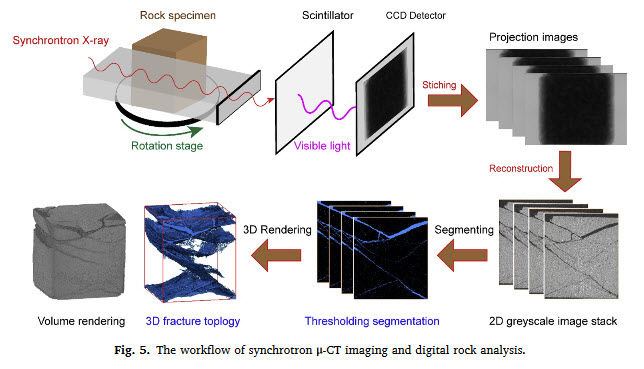Dynamic strength and failure modes of sandstone under biaxial compression
K. Liua, J. Zhaoa, G. Wua, A. Maksimenkob, A. Haquea, Q.B. Zhang - Department of Civil Engineering, Monash University, VIC, 3800, Australia - Australian Synchrotron / ANSTO, 800 Blackburn Rd, Clayton, VIC, 3168, Australia
Geomaterials are increasingly being subjected to the quasi-static confinements and dynamic loadings, and thus it is critical to characterise dynamic behaviour under the coupled static-dynamic loading conditions. In this study, a series of dynamic biaxial compression tests was performed on cubic specimens of sandstone by using a triaxial Hopkinson bar system, high-speed three-dimensional digital image correlation (3D-DIC) and synchrotron-based micro-computed-tomography (μCT).
How PerGeos is used
All μCT images obtained were further processed and analysed using Avizo Software on the MASSIVE cluster. The 3D images for each specimen were cropped to exclude uninformative parts which reduced the data to a more manageable size for further analysis.
A stack of 2D X-ray projections was recorded continually with the rotation of rock along a single vertical axis. In Avizo Software, the image processing techniques such as image binarisation, noise/ring-artefact reduction, sharping, segmentation as well as the spots removal were sequentially performed to enhance the image quality and obtain a satisfactory 2D-μCT image stack.
